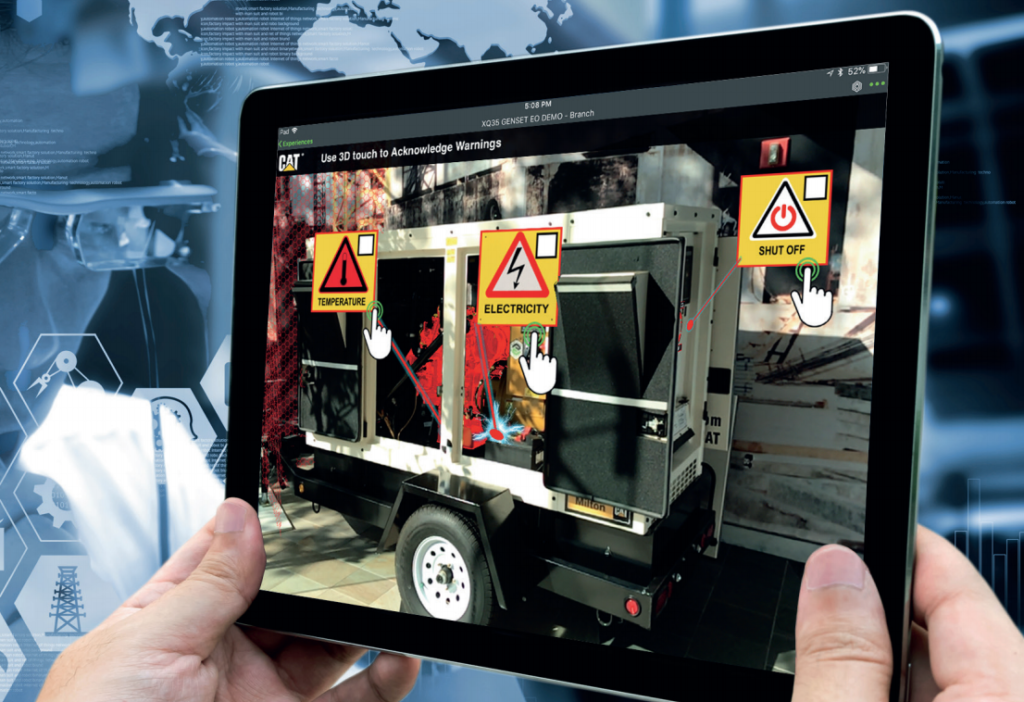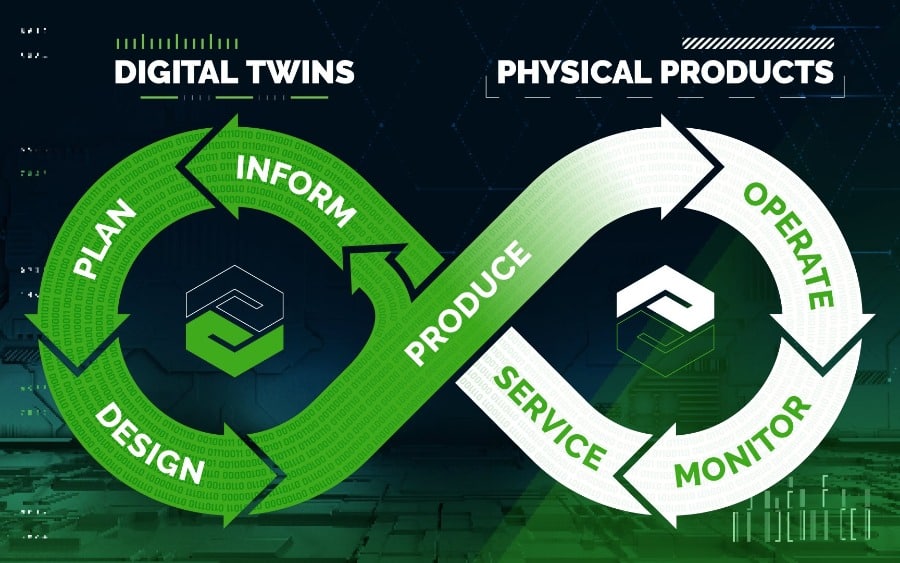Recent research from PTC shows that industrial enterprises are ahead of the pack when it comes to adopting augmented reality (AR). Companies that rely heavily on specific processes or product components find that using industrial AR helps in all phases of development, from design, to manufacturing, to post-sale services.
Industrial AR can be implemented across development from design, to manufacturing, to post-sale services.
Download the entire PTC State of Industrial AR 2019 Report.
Uses for Industrial AR
Training
About 55% of the research respondents cited instructing and training as their most frequent use case for industrial AR. In the past, companies relied on new employees shadowing more experienced employees as they “learn the ropes,” but that is an expensive and time-consuming method. To reduce time and associated costs, some organizations only instruct new employees to read training materials and not receive any hands-on experience. Either option is less than ideal for an employee needing to handle unfamiliar information with no real-world context.
Using industrial AR as the primary training media reduces the cost of onboarding employees and ensures a more complete transfer of knowledge and methodologies. Workers can be trained in a real-world work environment to provide better context and deeper understanding. AR-based training is reusable, so the cost per employee is much lower than if each worker required individual training or an individually assigned trainer.
According to PTC, 55% of organizations said they use industrial AR for training.
Work Instructions
Work, maintenance, and service manual instructions are another component of industrial companies that can benefit from AR implementation:
- Production: Production workers are using industrial AR to provide assembly and operation instructions on the shop floor.
- Maintenance: The maintenance team has replaced their bulky manuals with more up-to-date AR experiences. These modernized tools ensure they complete the job quickly, with minimal downtime and unplanned delays.
- Service: The field service team uses industrial AR to help them to complete calls during the first visit, an important metric for happy customers.

Design
Engineers and designers are using industrial AR to help them shorten time-to-market. Designers can watch how customers interact with products through AR experiences before the prototyping phase is completed. This can help determine what, if any, design changes need to be made. Industrial engineers can also use AR to plan efficient manufacturing processes and ensure those processes produce high-quality parts consistently. Implementing AR for design and manufacturing optimization helps companies to keeps costs low and product quality high.
Understand how customers will interact with products before investing in costly prototypes.
Marketing and Sales
Customers enjoy visiting virtual showrooms to ooh and ahh over new products. Some automotive companies even offer virtual test drives. In nearly every industry, industrial AR has helped shorten the sales cycle and resulted in more happy customers. Marketers can watch how users interpret marketing messages when they interact with products to help them manage customer expectations.
Fast Adoption is the Norm for Industrial AR
With all these benefits across the organization, it’s no wonder that 37% of respondents say they will be going live with their industrial AR projects in 0-6 months, and another 31% in 6-12 months. Add in the 4% who are already live, and the research shows that nearly three-quarters of industrial companies will be taking their AR projects live in the next year. Not a single company reported that they have no industrial AR projects in process, and only 5% said it would take them 2 years or more to go live. Companies who delay investigating industrial AR may find themselves lagging within their industry and suffering from higher costs and lower customer satisfaction.
Three-quarters of industrial companies will be taking their industrial AR projects live in the next year.
How To Choose an Industrial AR Platform
Not every company that sells industrial AR products understands the reality that manufacturing companies face on a day-to-day basis. Given the necessary speed of deployment and the critical nature of industrial AR projects, the most important criteria in choosing an AR technology partner should be the availability of solutions ready to deliver value quickly. These solutions should be easily customizable to meet a company’s objectives and should be easy to integrate with existing systems. This is a critical factor necessary to avoid disruptions that can hurt revenue or cause unhappy customers.
Look for ready-to-deploy solutions that can be customized to fit your organization’s unique needs.
 In addition to using their industry knowledge to ensure their products meet the needs of industrial manufacturers and similar industries, the AR technology supplier should also have a robust network of partners. That’s why it is so important to choose an industrial AR technology partner like PTC with deep roots in the industry.
In addition to using their industry knowledge to ensure their products meet the needs of industrial manufacturers and similar industries, the AR technology supplier should also have a robust network of partners. That’s why it is so important to choose an industrial AR technology partner like PTC with deep roots in the industry.
As one of PTC’s largest and most successful resellers, we know how to make your industrial AR project successful. For more information on how we can help you implement a robust digital transformation strategy, including industrial augmented reality software, just fill out the form below.

